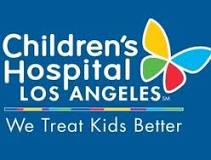Brachial Plexus Birth Palsy: Reinforcement Paradigm to Augment Recovery
| Status: | Recruiting |
|---|---|
| Healthy: | No |
| Age Range: | Any |
| Updated: | 3/27/2019 |
| Start Date: | February 25, 2019 |
| End Date: | December 13, 2020 |
| Contact: | Susan V Duff, EdD, PT, OT |
| Email: | duff@chapman.edu |
| Phone: | (714) 977-6704 |
A Home-Based Biofeedback Program to Augment Recovery After Perinatal Brachial Plexus Injury
Infants who sustain an injury to the brachial plexus in the perinatal period are at high-risk
for long-term neuromuscular deficits and prehensile dysfunction. If recovery is delayed
because of slow axonal regrowth, disuse atrophy and secondary musculoskeletal deficits may
develop. The investigators' hypothesis is that early, intensive intervention designed to
foster muscle activation is essential to optimize outcomes after brachial plexus injury and
may supplement rehabilitation and microsurgery. This proposal targets infants who are
non-surgical candidates. Yet, future studies will examine whether the investigators'
experimental intervention can hasten recovery from microsurgery and will examine which
post-operative time-point is best to employ it. The investigators' intervention shows promise
to increase muscle activation and improve arm function in infants with brachial plexus birth
palsy (BPBP) through contingent reinforcement based on a pilot study.
for long-term neuromuscular deficits and prehensile dysfunction. If recovery is delayed
because of slow axonal regrowth, disuse atrophy and secondary musculoskeletal deficits may
develop. The investigators' hypothesis is that early, intensive intervention designed to
foster muscle activation is essential to optimize outcomes after brachial plexus injury and
may supplement rehabilitation and microsurgery. This proposal targets infants who are
non-surgical candidates. Yet, future studies will examine whether the investigators'
experimental intervention can hasten recovery from microsurgery and will examine which
post-operative time-point is best to employ it. The investigators' intervention shows promise
to increase muscle activation and improve arm function in infants with brachial plexus birth
palsy (BPBP) through contingent reinforcement based on a pilot study.
The investigator's study objectives are to (1) test the feasibility of a parent-lead in-home
2-week intervention for infants with BPBP; and (2) determine the effect size for the primary
outcome measure(s) in preparation for a future definitive randomized controlled trial (RCT).
In this feasibility RCT, the investigators will compare two in-home interventions in 3 to
12-month-old infants with upper trunk BPBP; n=12 per group: (1) experimental; and (2)
dose-equivalent active control. For the experimental intervention, infants will trigger a
musical toy to move and play via biceps contraction above a preset individual threshold. For
the control intervention, toys will be available to play with, yet, there will be no
reinforcement for biceps activation.
2-week intervention for infants with BPBP; and (2) determine the effect size for the primary
outcome measure(s) in preparation for a future definitive randomized controlled trial (RCT).
In this feasibility RCT, the investigators will compare two in-home interventions in 3 to
12-month-old infants with upper trunk BPBP; n=12 per group: (1) experimental; and (2)
dose-equivalent active control. For the experimental intervention, infants will trigger a
musical toy to move and play via biceps contraction above a preset individual threshold. For
the control intervention, toys will be available to play with, yet, there will be no
reinforcement for biceps activation.
Inclusion Criteria:
1. Age of 3 to 12 months with upper trunk brachial plexus birth palsy confirmed by an
attending Hand and Upper Extremity Surgeon;
2. Full-term at birth;
3. A minimum score of '1' (0-7 scale) in elbow flexion of affected arm (isometric
contraction) based on the Active Movement Scale (AMS);
4. Score ≥ 25th percentile on the motor subtest of the Bayley Scales of Infant and
Toddler Development, 3rd Edition (BSITD-III®);
5. Ability to sustain attention/arousal for a 10 minute training period based on criteria
from the Neonatal Behavioral Assessment for an awake-alert state.
Exclusion Criteria:
1. Visual/auditory deficits;
2. Nerve repair/shoulder surgery;
3. Excessive crying during session(s);
4. Shoulder, elbow, or wrist joint contractures > 20° in the affected arm;
5. An inability to trigger the musical-toy to play at baseline.
We found this trial at
1
site
4650 Sunset Blvd
Los Angeles, California 90027
Los Angeles, California 90027
(323) 660-2450

Phone: 323-361-4165
Childrens Hospital Los Angeles Children's Hospital Los Angeles is a 501(c)(3) nonprofit hospital for pediatric...
Click here to add this to my saved trials